READY TO GET STARTED?
REQUEST A FREE ESTIMATE
Fill out the form below or call (888) 466-7849 for a free, no-obligation estimate.
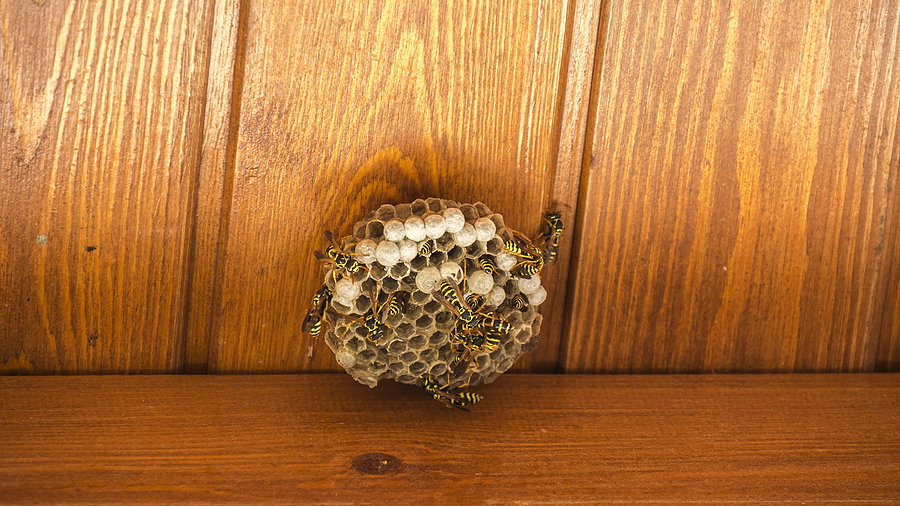
Stinging pests are most active during the summer months, so while we enjoy the summer fun of lounging by the pool and backyard BBQs, we should all be on the lookout for these pests as they can pose a risk to you and your family. Check out these common stinging pests and the best way to avoid them!
With a slim body shape, six long legs, and two wings, wasps are busy at work scavenging for food during the summer months. Wasps will typically build their nests in branches, porch ceilings, eaves, and attic rafters. These pests are highly attracted to picnics and backyard barbeques, increasing your chance of being stung. When threatened, wasps will sting multiple times and eventually call on reinforcements from other wasps by emitting pheromones.
Hornets’ nests are often built in hollow trees and the walls of houses and attics, although they typically prefer a forested environment. These pests are larger and can range from 3/4 to 1 3/8” long with brown and yellow abdominal stripes on their body. Hornets are attracted to light and will fly into your windows at night if they see a light on. They are relatively non-aggressive near the nest, but if threatened, there is a potential for a stinging hazard.
Yellowjackets are social insects and can be found anywhere humans are found. Yellowjackets feed on sweets and proteins; therefore, these pests commonly invade outdoor events. Yellowjackets measure 3/8″ to 5/8” long and have a non-fuzzy black and yellow striped body. Yellowjacket nests can either be built in very high places or built in the ground. Examples include in shrubs, garages, timber, logs, and more. If threatened, yellowjackets will sting multiple times, causing extreme pain and possible allergic reactions.
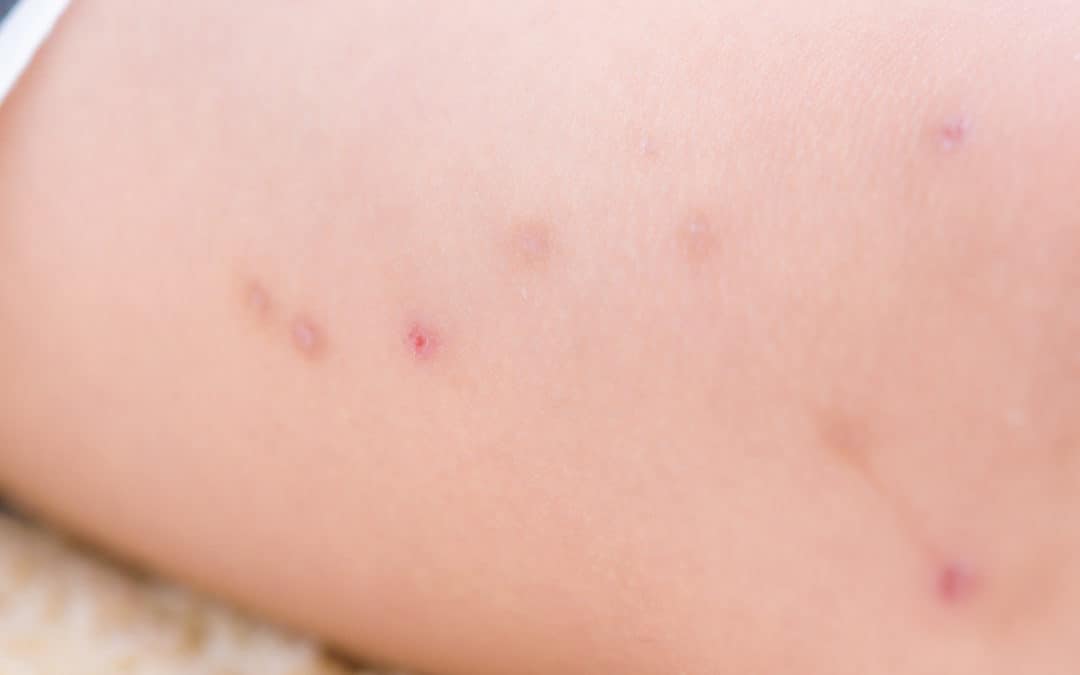
Summertime for most families means more time outdoors: exploring local parks, hiking mountains, kayaking down rivers, or simply lounging in your backyard. While these activities are fun for everyone, you can expose yourself to pests that like to bite. Fleas, ticks, and chiggers can be considered small, annoying, and hard to spot! Let’s break down the difference between all three of these parasites and some tips on bite prevention.
Fleas
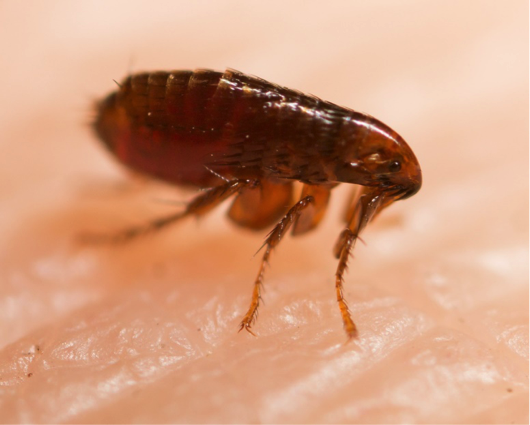
Small and wingless, fleas are dark reddish-brown in color and are only 1/8 of an inch long. Fleas can be found in almost any environment, but they are most active in warm, humid temperatures. While these pests feed on warm-blooded bodies, including humans, they do prefer to dine on hairy animals such as dogs, cats, rats, opossums, and more. Fleas are extremely hard to spot since they move so fast to a warm-blooded body.
Fleas can jump up to 8 inches high and 13 inches horizontally. This means that they can jump 150 times their own height, making finding a host to feed on very easy. Flea bites can be small, red, itchy spots on the skin. If the spot is scratched or irritated, it can begin to bleed.
Ticks
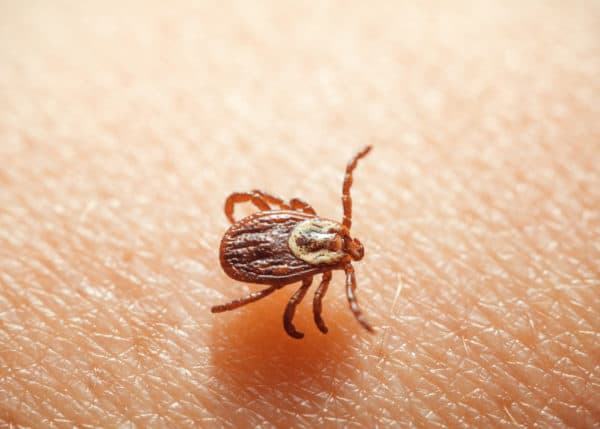
Ticks are orange-brown with dark legs and have a flat oval shape for a body. At a length of 1/8 of an inch, adult ticks actually have 8 legs and two body segments, making them an arachnid and not an insect. Ticks live in low-lying areas such as grass, shrubs, and bushes. These pests need blood to survive and will therefore feed on humans, squirrels, raccoons, birds, dogs, and more.
When ticks bite their host, it can cause irritation, an allergic reaction, and mouth parts can even remain in the host’s skin. Ticks are considered dangerous as they are known to transfer Lyme disease, anaplasmosis, and babesiosis.
Chiggers
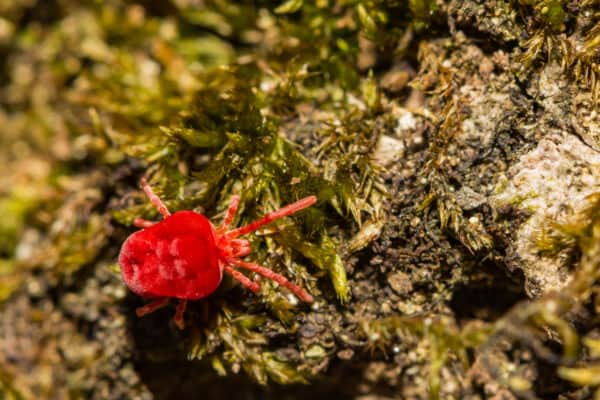
Sometimes referred to as mites or red bugs, chiggers are extremely small and difficult to spot. Red, orange, yellow or straw-colored, these arachnids are no more than .3 millimeters long. Chiggers can be found in areas of wood and grass, near lakes, ponds, streams, and rivers.
While they don’t pose a serious health risk, they can leave behind an uncomfortable rash after a bite that you’ll want to scratch. Chigger bites are most common in the late spring, summer, and early fall.
It’s important to take precautions if you know you and your family will be in areas where fleas, ticks, and chiggers are present. Here are some things you can do to prevent bites from these pests:
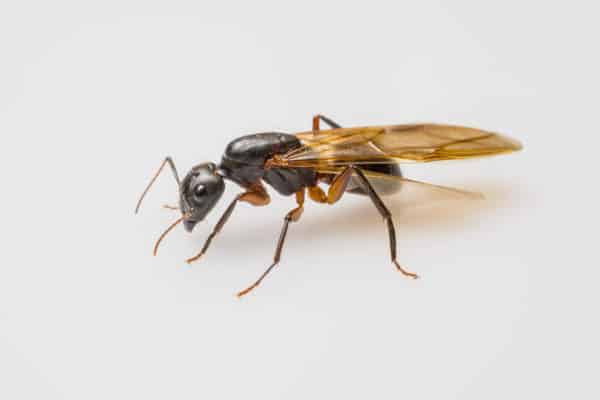
You’re lounging outside enjoying the peaceful outdoors when a flying pest zooms past you. You then realize it’s actually a flying ant! Don’t worry! Flying ants are actually very common, especially during seasons of high humidity. While flying ants are not a huge threat to humans, they can be a major nuisance, especially if they enter your home.
Flying ants swarm for the same reasons that termites swarm which is to reproduce and expand their colonies. These pests will swarm in late spring and the early summer when there’s bright sunlight and warm temperatures. Flying ants also prefer to swarm 3 to 5 days after a rainstorm.
While flying ants won’t cause damage to your home, they can make their way inside. It’s important to know what prevention steps to take when dealing with these pests.
Remember, if you see them flying by outside, don’t be too alarmed. If they end up inside your home, however, it’s always best to call your local pest control company who can determine the best plan of action.
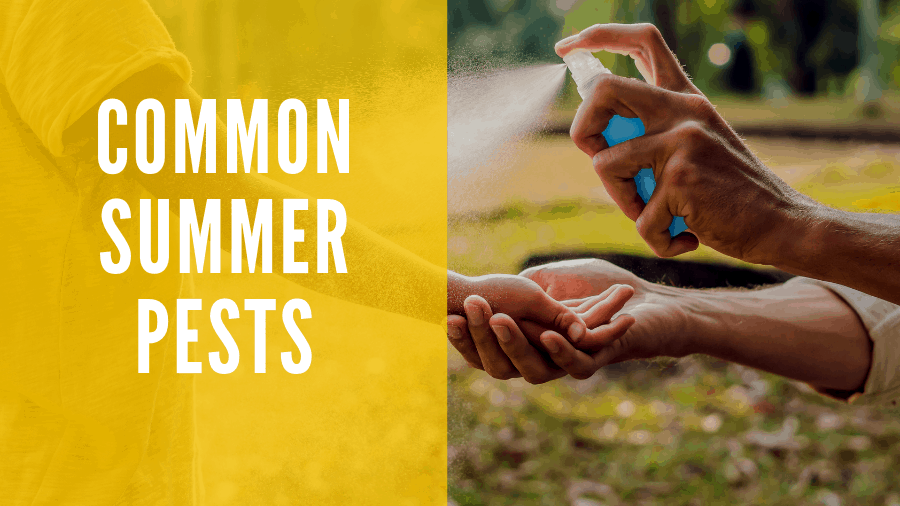
Summer is here and as the temperatures are ramping up and the summer storms roll in, new pests are taking advantage of the conditions and becoming more active.
Let’s check which summer pests are stirring up trouble in your neck of the woods.
The 2019 Atlantic hurricane season officially started June 1 and storms will start to occur more frequently. This excessive moisture will lead to areas of standing water which are the perfect breeding sites for yellow fever mosquitoes. To help prevent mosquitoes this summer, try to:
Swarming season for carpenter ants is typically from May through August. Just like yellow fever mosquitoes, carpenter ants need water for survival and will be drawn to your home if there is excess moisture. To keep ants out of your home this summer try to:
Formosan termites are sometimes called “super termites,” as they are known to be very aggressive. Formosans can chew through wood, floors, and even wallpaper without being detected. A few ways to prevent termites and their subsequent damage are to:
Pests are a hassle but preparation and treatment are key in stopping them in their tracks. Call to schedule a free home inspection and start your journey to a pest-free home.

No matter what season it is, pests will always be in search of 2 things: shelter and food. One place that provides both of these is your home! Pests are influenced by the seasons so their threats change as the weather changes. Different seasons bring different pests in varying stages of their life cycles. It is important to know seasonal pest patterns for your area to make the proper preparations for your home. What can you expect as each season changes throughout the year?
Winter is a time of hibernation and survival for pests. Colder weather triggers a need for most pests to find shelter; some seek shelter outdoors while others will seek shelter indoors. Bees, wasps, and other stinging insects will seek out places in logs or in the eaves of your home. Ants will seek shelter in their nesting sites. Overwintering pests like cockroaches, spiders, and rodents will seek shelter indoors, sometimes in our homes. The key to prevention of winter pests is to prepare your home in the fall.
Spring is a time of awakening and mating for most pests. As the weather warms, pests will emerge from their winter shelters and increase their activity. Pests that hibernate over winter will awaken from their dormant states. The spring rains will drive ants from their nesting sites in search of higher ground. Spring also marks the beginning of swarming season for termites. Most pests will move outdoors in the spring in search of mates.
Summer brings the height of backyard pests that put a damper on our outdoor fun. While we tend to see fewer pests inside our homes, we do tend to see larger numbers of pests in our yards and other outdoor areas. Mosquitoes are especially active in the summer months because of the moisture from spring and summer rains. Bees, wasps, and other stinging insects are also more active in the summer; their nests can often be found on our near our homes.
Fall is a time of preparation for most pests as they get ready for the harsh winter months. Common fall pests include ladybugs, box elders, and spiders. These pests will often invade your home at this time of the year in search of shelter for the coming months. Fall is a good time to prepare your home for those overwintering pests seeking shelter from the winter weather also, like cockroaches and rodents.
No matter the season, there are steps you can take to protect your home from pests year-round:
If these steps aren’t enough or if you already have a pest problem, call a pest control professional who can come and give your home a thorough inspection and help you with a treatment and prevention plan.